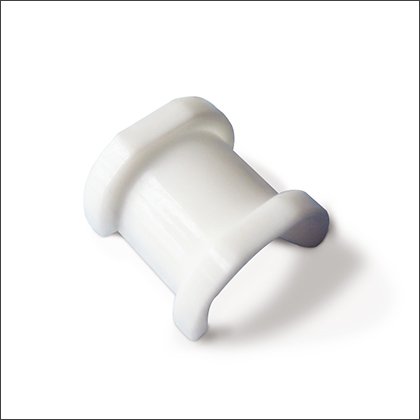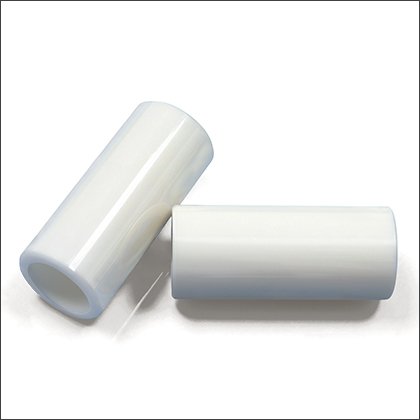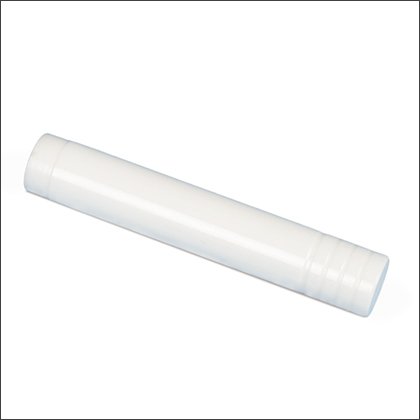Material Overview
Zirconia toughened alumina (ZTA) is a high-performance composite ceramic combining the hardness of alumina (Al₂O₃) with the fracture toughness of zirconia (ZrO₂). Typically containing 10–20% ZrO₂, ZTA achieves a unique balance of mechanical strength (flexural strength>450 MPa) and wear resistance, making it ideal for industrial cutting tools, biomedical implants, and high-stress aerospace components.
Technical Data Table
| Property | ZTA (zirconia toughened alumina) | 99% Al2O3 |
| Density (g/cm³) | >4.0 | >3.80 |
| Flexural Strength (MPa) | >450 | >310 |
| Modulus of Elasticity (GPa) | >360 | 350 |
| Thermal Conductivity (W/m·K) | 26 | 29 |
| Max. service temperature (℃) | 1500 | 1600 |
| Dielectric Strength (kV/mm) | 9 | >17 |
Jinghui provides customized production of ZTA ceramics. The products are mainly used in high wear environments and are also used as customized zirconia toughened alumina Substrates and ZTA sheets.
Key Features
- Enhanced Fracture Toughness: Up to 5~6 MPa√m via stress-induced zirconia phase transformation (tetragonal → monoclinic), absorbing crack energy.
- High Hardness: Vickers hardness of 1,600 HV, outperforming pure alumina by 30% in abrasive environments.
- Thermal Stability: Operates at temperatures up to 1,500°C with minimal thermal expansion mismatch.
- Chemical Resistance: Resists acids, alkalis, and molten metals, ideal for corrosive industrial settings.
Applications
- Industrial Cutting Tools: ZTA inserts with chip-breaking grooves reduce wear by 50% compared to traditional ceramics.
- Biomedical: Hip joint replacements and dental implants due to biocompatibility and low friction.
- Energy: Refractory linings for reactors and thermal barrier coatings.
- Aerospace: Radomes and engine components requiring high thermal shock resistance.
Manufacturing Techniques
- Dry Pressing: Low cost, high efficiency, suitable for simple shapes (such as sheets, cylinders).
- Tape Casting: Used to prepare thin ceramic sheets (such as electronic substrates).
- CNC/Grinding: Precision dimension products.
Zirconia-toughened alumina (ZTA) and alumina-toughened zirconia (ATZ) are two different composite materials. The first material in the noun refers to the additive, while the second material is the primary component.
In zirconia-toughened alumina (ZTA), the zirconium oxide content is lower than the alumina content, ranging from approximately one-tenth to one-fifth, and this ratio can be adjusted to suit product requirements. ZTA ceramics offer an excellent balance between cost and value. ZTA products are stronger than standard alumina products. They are also less expensive than pure zirconia products.
Alumina-toughened zirconia (ATZ) is also a unique composite ceramic material, with a lower alumina content than zirconia. Its alumina content imparts high hardness, strength, wear resistance, and corrosion resistance, while maintaining a relatively high fracture toughness due to its zirconium oxide content.
ZTA’s superior performance stems from zirconia’s phase transformation toughening mechanism. When cracks form, stress triggers the tetragonal-to-monoclinic phase transition in ZrO₂, absorbing energy and halting crack propagation. For example, ZTA with 0.25 wt.% Nb₂O₅ achieves a fracture toughness of 9.17 MPa√m, 3x higher than pure alumina. This makes it ideal for cutting tools and wear-resistant components.
Pure alumina can be used when toughness requirements are not high; if higher toughness is required, pure zirconia can be considered (with higher cost).
- Mining & Manufacturing: ZTA-lined composite pipes show 19x higher impact resistance than pure alumina, reducing maintenance in abrasive slurry transport.
- Medical: ZTA hip implants exhibit <0.1 mm/year wear rates, outperforming metal alloys.
- Electronics: ZTA substrates with low dielectric loss (ε ≈0.0005) enhance signal integrity in high-frequency circuits.
ZTA ceramics can be used to produce simple to medium-complexity geometries, such as parts with grooves or steps, by dry pressing. Due to the high hardness of the sintered material, complex details may require subsequent diamond processing, and the complexity of the final shape depends on the mold design. We can evaluate the specific feasibility based on your drawings.






